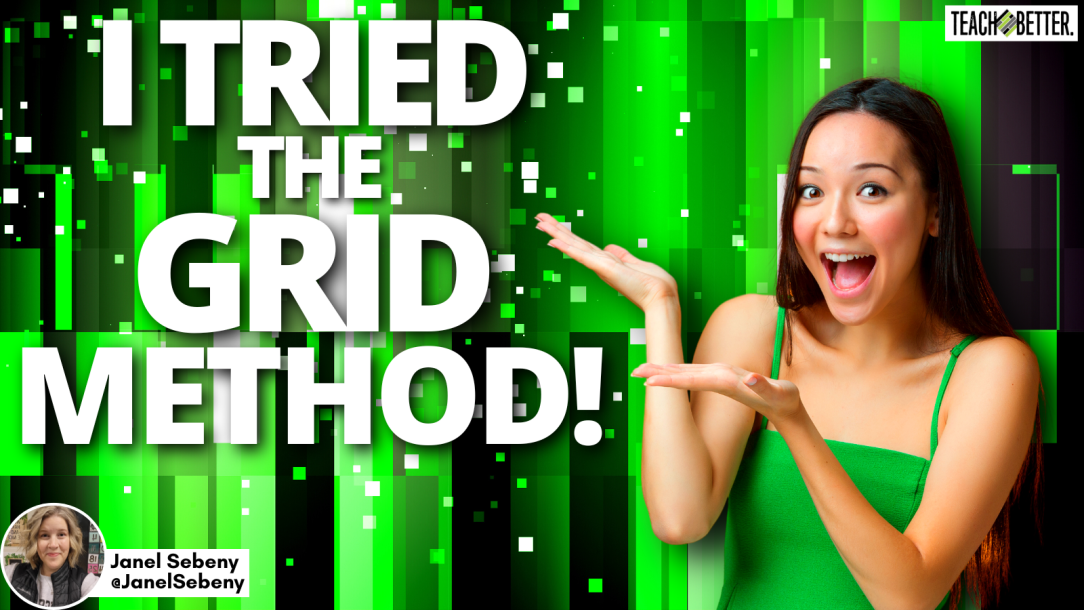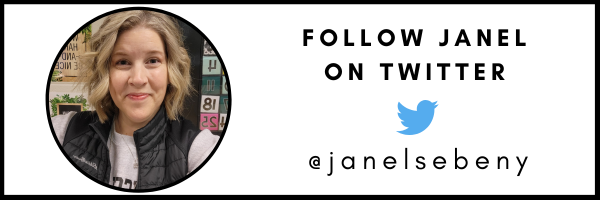TL;DR:
- Trying The Grid Method for the first time can be intimidating.
- The first piece of advice for trying The Grid Method is to become a learner.
- Use DOK levels to advance learners in each level of a Grid.
- The Grid Method can allow teachers to conference with students during class more than other structures.
- When trying something new, don’t forget to reflect so you can do it even better the next time.
So here’s the thing. For whatever reason, I was completely intimidated by the Grid Method. There were all these boxes and rows and boxes and…it stressed me out. So how would I give it to my students? What I realize now is that my fear and ignorance were keeping me from jumping in and trying it, ultimately holding me back.
This blog post isn’t for me to sit here and explain what the Grid Method is, but rather an opportunity to share my experience with using this fabulous instructional method in my middle school language arts classroom.
I tried the Grid Method! And I am so glad I did.
My first piece of advice? Be a learner!
As I began developing my first Grid, I leaned on experts in the field: Chad Ostrowski, Rae Hughart, and Katie Miglin. During winter break, Chad walked through the way to create a Grid live step by step. I also took the DOK course in the Teach Better Academy. This gave me a better understanding before I began with my own standards and targets. Rae and Katie were my confidence builders as I asked a million and one questions. At that point, there was nothing left to do but go for it.
The creation of the Grid helped me tease out what I wanted students to know.
As I sat down with my spiral of standards, my blank templates, and my end goal, my pen went to paper and I started teasing out what I wanted my students to know.
This process alone was worth the time.
It allowed me to dive deeper into levels of progression in mastery in the informative genre. The boxes I included at the bottom of my Grid in level 1 focused on the foundational skills I wanted students to know before we began writing. I then worked my way up the DOK levels with research skills, putting it all together with graphics, and finally publishing.
The Grid Method allowed me to meet students where they were at in their learning.
My favorite part about using the Grid Method was how much it freed up my time to assist students in class. I pre-assessed students prior to the unit. I then used the recommended progress tracker to have students click on “done” if they tested out of that concept. Therefore, some students began the Grid at the extension, while others may have skipped one or two boxes. For example, many tested out of using text features in their writing; so, they did not do the sort with images and terms. They, instead, went on to the next box in the Grid. I found this to be empowering for the students. Because students are self-paced, it allows me to confer with students more during class time than ever before. In addition, students were able to feel success as they progressed through each box.
My co-teacher also teaches her own section of instructional language arts. She loves this idea and chose to adapt The Grid Method for her learners. She created a week-by-week method with specific success criteria and more explicit directions. Students have a column with brain breaks off to the side as well. It allows students to work more independently, all the while increasing her ability to scaffold within the workshop setting because of this. We can confirm The Grid Method works in both gen ed and co-taught classrooms.
Because students are self-paced, it allows me to confer with students more during class time than ever before. Click To TweetAnd then there was the time for reflection.
Like all things we try in our classroom, nothing is perfect. There were definitely some hiccups. The good news? You get to learn from my mistakes!
First of all, because students tested out, some of them were ahead of me the first few days. So, there I was scrambling to get content linked and activities prepared, which my type-A personality did not like at all. I had to remind myself to keep going and show some vulnerability to my students, who thankfully gave me grace. I would recommend creating all materials at least five boxes ahead of the class goal. This was somewhat difficult at the first level, but once they began writing their piece, it became much easier to manage.
Secondly, don’t put too much in one box. I had my research notecards and gathering credible sources in one box and my students lived there for way too long. In the future, I would break it up to help them feel more successful in accomplishing smaller goals. I felt like I lost engagement from some at this point for a short while, at my own doing.
Lastly, I would suggest putting everything you are going to do into the Grid if possible. I had some materials in the classroom for students to pick up, some assignments on Google Classroom, and others linked into the Grid. This became confusing for students and things were missed as a result. When I do my next Grid, I will take pictures and hyperlink as much as possible.
[scroll down to keep reading]In the end, students and teachers alike are asking about The Grid Method.
Student reflections show the Grid Method was a positive experience for them. They commented on how much they enjoy self-pacing and don’t feel rushed. Students who need a challenge are able to move forward without being pulled back with whole class lessons. Students who need one-on-one assistance get it. They hope we do another Grid before the end of the year, so my next one will be coming up after break.
And teachers? The word has spread! I had two teachers observe my classroom to see “how it works” and three additional teachers meet with me to brainstorm and help them start one in their classrooms. I shared my sources and a few attended the recent 12-Hour Live Event to learn more. The beauty of this is we are all trying it out together and learning from one another.
So, back to that fear and ignorance. Geesh! I didn’t know what I didn’t know, and now I know, ya know? If you’re reading this far, I can tell you want to check it out too. I say, GO FOR IT!
It’s all about learning and growing in our craft, right? The process of creating a Grid is powerful, giving kids ownership is everything, and reflecting on our practice is always a win.
About Janel Sebeny
Janel Sebeny is a middle school Language Arts teacher in Normal, Illinois. Janel holds a Master’s in Reading from Illinois State University and is the Past President of Illinois Reading Council. She serves as the PBIS Tier 1 Coach, Language Arts Middle School District Chair, and teacher liaison for Beyond the Books Educational Foundation. She has a passion for literacy and lifelong learning.
Janel is not only reflective in her practice, but also the first to share with others what she learns. In fact, she recently received an Illinois State Board of Education 2023 Those Who Excel Award. While she is not creating engaging and relevant lessons for her middles, she is spending time with family and friends. Janel resides with her husband and three children in Bloomington, Illinois.




